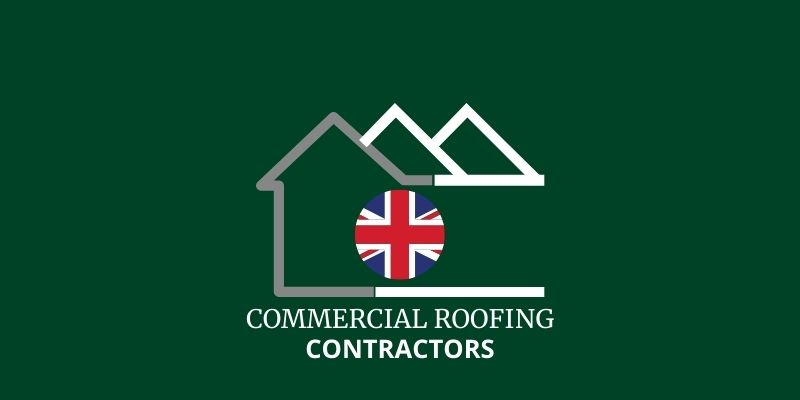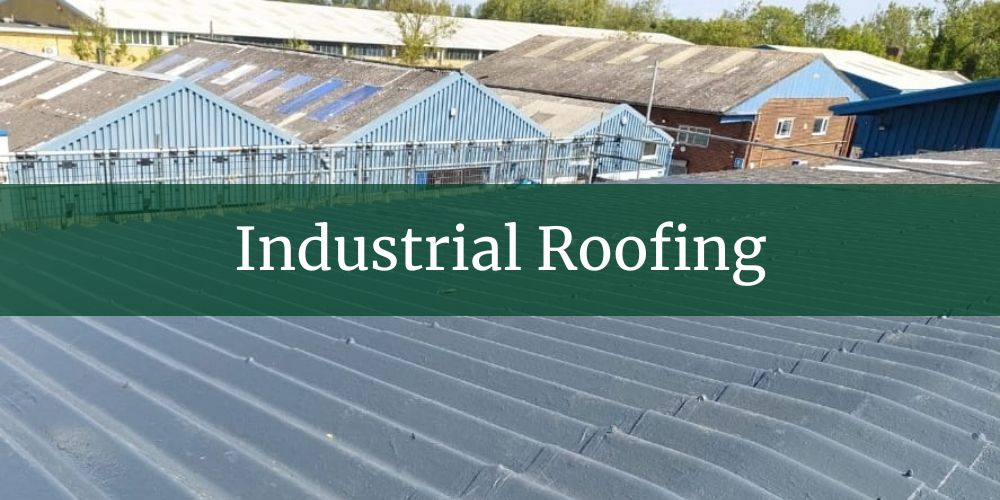Industrial roofing requires highly resilient systems to withstand the country's varied and sometimes harsh weather conditions, which include heavy rain, strong winds, and occasional snow. Given the UK's unpredictable climate, industrial roofs must be designed with durable materials and advanced engineering to prevent leaks, structural damage, and energy inefficiency. Furthermore, a robust roofing system ensures longevity, reducing the need for frequent repairs and offering better protection for valuable assets and operations housed within industrial facilities. Commercial Roofing Contractors provide industrial roofing services to industrial buildings across the UK.
For UK industrial property owners and facility managers, investing in a resilient roofing system is vital to safeguard against weather-related damage and minimise operational disruptions. In this blog, we'll explore the specific challenges posed by the UK's climate, the essential features of resilient roofing systems, and practical tips for ensuring long-term protection and cost efficiency.
What Makes Industrial Roofing Different from Other Types of Roofing?
Industrial roofing is specifically designed to meet the unique needs of large-scale commercial structures. Unlike residential and standard commercial roofing, it is engineered to handle greater spans, loads, and environmental challenges. This often includes enhanced resistance to chemicals, extreme weather, and large temperature variations typical of industrial environments.
Here are five key aspects that demonstrate what makes industrial roofing distinct from other roofing types:
- Load Capacity: Supports heavier equipment and infrastructural demands.
- Chemical Resistance: Designed to withstand industrial chemical exposure.
- Thermal Resistance: Offers superior insulation against extreme temperature variations.
- Durability: Built for longevity under strenuous conditions.
- Maintenance Requirements: Engineered for minimal maintenance with long-term functionality.
1. Load Capacity: Supports heavier equipment and infrastructural demands.
This aspect refers to a roof’s ability to support significant weight beyond typical architectural needs. Industrial roofing must bear the burden of heavy machinery, HVAC units, and other equipment. Unlike other roofing types, it is engineered with additional structural support to prevent sagging or collapse. This is crucial for the safety and efficiency of industrial operations, requiring materials such as reinforced steel or specialised concrete. The design ensures the roof does not simply act as a weather barrier, but as an integral part of the industrial infrastructure.
2. Chemical Resistance: Designed to withstand industrial chemical exposure.
Chemical resistance in roofing refers to the material's ability to resist damage from industrial chemicals. Industrial environments may expose roofs to chemicals from manufacturing processes or exhausts. Unlike residential roofing, industrial roofing uses materials that resist degradation from these chemicals. This resistance ensures that the roof maintains its integrity and functionality over time, preventing costly repairs and potential safety hazards from leaks or structural failures.
3. Thermal Resistance: Offers superior insulation against extreme temperature variations.
Thermal resistance is the ability to maintain structural stability despite temperature changes. Industrial roofs often face greater temperature fluctuations from external weather or internal industrial activity. They are built with better insulation materials compared to other types of roofing. This feature reduces energy costs by maintaining stable internal temperatures, illustrating a critical difference in design priorities for industrial roofing compared to standard roofing solutions.
4. Durability: Built for longevity under strenuous conditions.
Durability refers to the roof’s capability to endure wear, pressure, or damage over extended periods. The demanding nature of industrial settings requires roofs that last longer and withstand harsher conditions than typical commercial or residential roofs. They are constructed with robust materials that resist mechanical stress and environmental wear. Durability in industrial roofs leads to lower long-term costs and reduced frequency of replacements or major repairs, offering significant economic benefits.
5. Maintenance Requirements: Engineered for minimal maintenance with long-term functionality.
Maintenance requirements pertain to the frequency and extent of repairs needed to keep the roof functional. Industrial roofing is designed for low maintenance, with materials and structures that resist common wear and reduce repair needs. This is crucial as industrial operations can be disrupted by frequent maintenance activities. Such roofing is often coated or treated for enhanced longevity, ensuring that even with minimal upkeep, it performs effectively over its lifespan. This benefit is particularly valuable for industrial settings where downtime can result in significant financial loss.
Have a question about an upcoming project?
Why Is Resilience Crucial for Industrial Roofing Systems?
Resilience in industrial roofing systems ensures long-term protection and efficiency under various challenging conditions. Industrial roofs are exposed to diverse weather patterns, physical stresses, and potential hazards, requiring robust materials that can withstand these factors without compromising structural integrity. Investing in resilient roofing minimises maintenance costs and prolongs the lifespan of the facility.
The following list outlines key reasons why resilience is essential for industrial roofing systems:
- Weather Resistance: Shields against extreme weather events like heavy rain, hail, and strong winds.
- Durability: Prolongs the life of the roof despite harsh environmental conditions.
- Thermal Performance: Maintains temperature stability, reducing energy costs and improving efficiency.
- Impact Resistance: Capable of withstanding physical pressure and potential damage from debris.
- Cost Efficiency: Reduces long-term maintenance and replacement expenses.
1. Weather Resistance: Shields against extreme weather events like heavy rain, hail, and strong winds.
Weather resistance refers to a roof’s ability to withstand adverse weather conditions without sustaining damage. For industrial roofing systems, weather resilience is paramount, as facilities often have large surface areas exposed to the elements. Ensuring effective protection against severe weather prevents structural damage and minimises repair needs. With climate change leading to more frequent extreme weather events, selecting materials that provide superior weather resistance is increasingly important. This choice ultimately safeguards operations and reduces downtime.
2. Durability: Prolongs the life of the roof despite harsh environmental conditions.
Durability refers to the longevity of roofing materials and their ability to maintain performance over time. In industrial settings, a durable roof is critical to supporting the building's operations without interruption. Durable materials prevent early wear and tear, ensuring the infrastructure remains sound and secure. Opting for highly durable roofing solutions enhances the value of the investment by reducing the frequency of repairs and replacements, thus supporting long-term operational goals.
3. Thermal Performance: Maintains temperature stability, reducing energy costs and improving efficiency.
Thermal performance in roofing pertains to the ability to regulate temperature through insulation and reflectivity. High thermal performance in industrial roofs helps maintain internal temperature, reducing reliance on heating and cooling systems and thus lowering energy bills. This is especially important in climates with significant temperature variations. Well-insulated roofing systems contribute to a more sustainable and energy-efficient facility by improving energy conservation, reducing operational expenses, and enhancing comfort for building users.
4. Impact Resistance: Capable of withstanding physical pressure and potential damage from debris.
Impact resistance is a roof's ability to endure forces exerted by debris or other physical stressors. For industrial facilities, roofs can be subjected to various impacts, such as falling branches or equipment. An impact-resistant roof safeguards against such physical damage, ensuring the building remains secure. This reliability is vital in industrial environments where ongoing operations depend on the uninterrupted integrity of the roofing system. Selecting impact-resistant materials prevents potential hazards and associated repair costs.
5. Cost Efficiency: Reduces long-term maintenance and replacement expenses.
Cost efficiency refers to the financial benefits derived from investing in resilient roofing systems. While the initial cost of resilient materials may be higher, the long-term savings from reduced maintenance and longer replacement cycles justify the investment. Resilient roofing lowers ongoing operational costs by minimizing repairs and downtime. Ultimately, cost-efficient roofing solutions enhance the facility's bottom line by extending the lifecycle of the roof, providing consistent protection, and lowering total expenditure over time.
How Can You Select the Right Roofing System for Your Industrial Facility?
Choosing the correct roofing system involves assessing factors such as climate, durability, and energy efficiency. Industrial facilities require roofs that not only provide protection but also contribute to operational cost savings and sustainability. Carefully evaluating your facility's needs and the available roofing options will ensure a suitable and long-lasting solution.
Consider the following factors when selecting the right roofing system for your industrial facility:
- Climate Suitability: Matches your region's weather conditions effectively.
- Durability: Ensures a long lifespan with minimal maintenance.
- Energy Efficiency: Reduces heating and cooling costs across the facility.
- Cost-effectiveness: Provides value without compromising on quality or performance.
- Environmental Impact: Minimises carbon footprint through sustainable materials and practices.
1. Climate Suitability: Matches your region's weather conditions effectively.
Climate suitability refers to the ability of a roofing system to withstand the prevalent weather conditions of a specific location. For an industrial facility, selecting a roof that is climate-suitable ensures longevity and reduces the risk of weather-related damage. Considerations like resistance to temperature extremes, precipitation, and wind are crucial for a roof's performance. Climate suitability is paramount to prevent frequent repairs and improve the reliability of the facility's operations.
2. Durability: Ensures a long lifespan with minimal maintenance.
Durability pertains to the robustness of a roofing material and its capacity to endure wear and tear over time. With a durable roofing system, industrial facilities can experience uninterrupted operations without constant repair or replacement needs. Investing in durable materials can lead to significant savings and peace of mind, as they can withstand environmental stresses and physical impacts.
3. Energy Efficiency: Reduces heating and cooling costs across the facility.
Energy efficiency involves the ability of the roofing system to reflect sunlight and insulate the building. An energy-efficient roof can significantly decrease utility expenses by maintaining optimal indoor temperatures. Considering energy-efficient solutions can also contribute to a facility's sustainability goals by reducing its overall energy consumption and carbon footprint.
4. Cost-effectiveness: Provides value without compromising on quality or performance.
Cost-effectiveness evaluates the balance between a roofing system's price and its performance benefits. Selecting a cost-effective option ensures that the investment aligns with budget constraints without sacrificing necessary features. Prioritising value over initial costs can lead to long-term financial benefits through reduced energy bills and minimal repair needs.
5. Environmental Impact: Minimises carbon footprint through sustainable materials and practices.
Environmental impact refers to the ecological footprint associated with the manufacturing, maintenance, and disposal of the roofing system. Choosing an environmentally friendly roof promotes sustainable building practices and aligns with regulatory standards and corporate responsibility goals. Sustainable roofing materials and practices help reduce landfill waste and promote a healthier environment, contributing to green building certifications and incentives.
The need for highly resilient industrial roofing systems is more crucial than ever, as they must endure the abrasive conditions and intensive operational demands unique to industrial environments. The insights gleaned from industrial roofing are significantly applicable to commercial roofing, particularly in the United Kingdom, where weather variability and urban settings necessitate robust solutions. By investing in resilient systems designed to meet the distinct needs of both industrial and commercial structures, businesses can enhance the longevity of their roofs, ensuring efficiency and safety while optimising their investments. The convergence of industrial and commercial roofing expertise paves the way for innovation and superior protective solutions tailored to the dynamic environment of the UK.
If you are interested in exploring resilient roofing solutions for your commercial building or require specific guidance tailored to the unique weather conditions of the United Kingdom, please get in touch with us through our contact form. Our expert team is ready to provide you with personalised solutions to safeguard your business.

